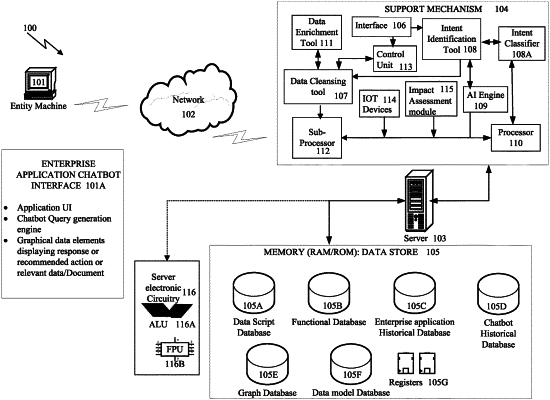| CPC H04L 51/02 (2013.01) [G06F 40/30 (2020.01); G06N 20/00 (2019.01); G06Q 10/087 (2013.01)] | 28 Claims |

|
1. A data processing method for enterprise application chatbot, the method comprises:
receiving one or more data strings or initiation of an SCM action from a user through an electronic user interface of the enterprise application;
parsing intent of the user from the received one or more data strings or the SCM action by a processor coupled to an AI engine wherein one or more one data scripts are identified based on the parsed intent to trigger one or more processing task wherein parsing intent of the user based on the SCM action includes predicting one or more SCM Scenarios intended to be executed by the user wherein a bot identifies one or more nodes of a SCM network linked to the SCM action and the one or more SCM scenarios for parsing the intent and wherein one or more dataset elements associated with the SCM action executed on the interface are analyzed by the bot to determine accuracy of the predicted one or more SCM Scenarios;
embedding data specific to the one or more processing task on the identified data script to generate one or more relevant data; and
sending the relevant data by the chatbot to the enterprise application interface in response to the received one or more data strings or the SCM action for enabling the user to make an informed decision, wherein the one or more data scripts executes the processing task based on at least one data model trained on one or more historical dataset for predicting and extracting the one or more relevant data from a historical database.
|